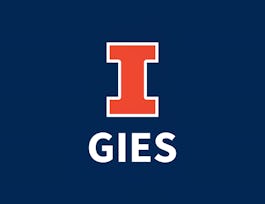In this course, you will start by reviewing the fundamentals of investments, including the trading off of return and risk when forming a portfolio, asset pricing models such as the Capital Asset Pricing Model (CAPM) and the 3-Factor Model, and the efficient market hypothesis. You will be introduced to the two components of stock returns – dividends and capital gains – and will learn how each are taxed and the incentives provided to investors from a realization-based capital gains tax. You will examine the investment decisions (and behavioral biases) of participants in defined-contribution (DC) pension plans like 401(k) plans in the U.S. and will learn about the evidence regarding the performance of individual investors in their stock portfolios. The course concludes by discussing the evidence regarding the performance of actively-managed mutual funds. You will learn about the fees charged to investors by mutual funds and the evidence regarding the relation between fees charged and fund performance. Segments of the portfolios of mutual funds that may be more likely to outperform and examples of strategies designed to “earn alpha” will also be introduced.



Investments II: Lessons and Applications for Investors
This course is part of Financial Management Specialization

Instructor: Gies College of Business, University of Illinois
33,012 already enrolled
Included with 
(854 reviews)
Skills you'll gain
Details to know

Add to your LinkedIn profile
5 quizzes
See how employees at top companies are mastering in-demand skills

Build your subject-matter expertise
- Learn new concepts from industry experts
- Gain a foundational understanding of a subject or tool
- Develop job-relevant skills with hands-on projects
- Earn a shareable career certificate


Earn a career certificate
Add this credential to your LinkedIn profile, resume, or CV
Share it on social media and in your performance review

There are 6 modules in this course
You will become familiar with the course, your classmates, and our learning environment.
What's included
5 videos8 readings1 quiz1 discussion prompt
In Module 1, we will briefly review the fundamentals of investments, including the trading off of return and risk when forming a portfolio, asset pricing models such as the Capital Asset Pricing Model (CAPM) and the 3-Factor Model, and the efficient market hypothesis. We will also discuss the two components of stock returns – dividends (cash received) and capital gains (changes in price since purchase).
What's included
10 videos3 readings1 quiz
In Module 2, we discuss the investment decisions of participants in defined-contribution (DC) pension plans like 401(k) plans in the U.S. Not falling prey to common behavioral biases is key to sound financial decision-making in these retirement plans, so we will discuss common behavioral biases of DC pension plan participants.
What's included
12 videos2 readings1 quiz
In Module 3, we will learn about the evidence regarding the performance of individual investors in their stock portfolios. A few key behavioral biases that affect many individuals will be highlighted, and the potential information embedded in some parts of individual investors’ stock portfolios will be discussed.
What's included
14 videos2 readings1 quiz
In Module 4, we will learn about the evidence regarding the performance of actively-managed mutual funds. We will also discuss a few examples of portfolio strategies designed to “earn alpha” (i.e., yield positive risk-adjusted returns).
What's included
17 videos2 readings1 quiz
It's now time to say goodbye to the Investments II course! Key takeaways from the course are reviewed. Don't forget to answer the survey question regarding how was Scott's sequel that is located at the end of the Conclusion to Investments II: Lessons and Applications for Investors!
What's included
1 video2 readings1 discussion prompt
Instructor

Offered by
Recommended if you're interested in Finance

University of Illinois Urbana-Champaign

University of Illinois Urbana-Champaign

University of Illinois Urbana-Champaign
Build toward a degree
This course is part of the following degree program(s) offered by University of Illinois Urbana-Champaign. If you are admitted and enroll, your completed coursework may count toward your degree learning and your progress can transfer with you.¹
Why people choose Coursera for their career




Learner reviews
Showing 3 of 854
854 reviews
- 5 stars
83.60%
- 4 stars
12.17%
- 3 stars
2.45%
- 2 stars
0.58%
- 1 star
1.17%
New to Finance? Start here.

Open new doors with Coursera Plus
Unlimited access to 7,000+ world-class courses, hands-on projects, and job-ready certificate programs - all included in your subscription
Advance your career with an online degree
Earn a degree from world-class universities - 100% online
Join over 3,400 global companies that choose Coursera for Business
Upskill your employees to excel in the digital economy
Frequently asked questions
Access to lectures and assignments depends on your type of enrollment. If you take a course in audit mode, you will be able to see most course materials for free. To access graded assignments and to earn a Certificate, you will need to purchase the Certificate experience, during or after your audit. If you don't see the audit option:
The course may not offer an audit option. You can try a Free Trial instead, or apply for Financial Aid.
The course may offer 'Full Course, No Certificate' instead. This option lets you see all course materials, submit required assessments, and get a final grade. This also means that you will not be able to purchase a Certificate experience.
When you enroll in the course, you get access to all of the courses in the Specialization, and you earn a certificate when you complete the work. Your electronic Certificate will be added to your Accomplishments page - from there, you can print your Certificate or add it to your LinkedIn profile. If you only want to read and view the course content, you can audit the course for free.
If you subscribed, you get a 7-day free trial during which you can cancel at no penalty. After that, we don’t give refunds, but you can cancel your subscription at any time. See our full refund policy.


